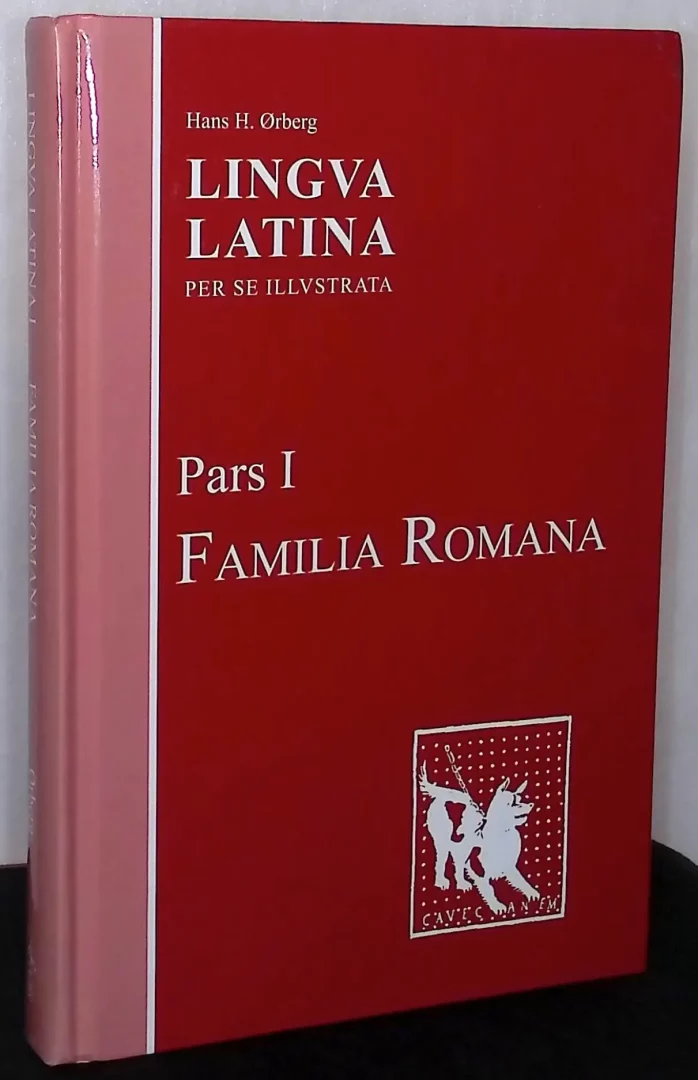Table of Contents
A Living Latin Gateway
There’s a strange beauty in opening a book written entirely in a language you don’t yet know — and yet finding yourself understanding it. That’s the initial enchantment of Lingua Latina Per Se Illustrata (LLPSI). Ørberg doesn’t teach Latin. He invites you to live it.
From the first sentence, “Roma in Italia est,” you’re not just parsing grammar — you’re entering a world. A Roman household, a family, domestic drama, civic life — all presented in carefully controlled Latin that feels more like watching a series of illustrated scenes than studying a textbook. And somehow, as you turn the pages, the language unfolds like memory, not instruction.
How It Teaches Without Teaching
LLPSI is often described as a “natural method” book, but what it really does is build intuitive linguistic gravity. Words repeat with variation. Syntax stretches only after you’re grounded in its previous forms. You don’t “learn” the subjunctive — you absorb its mood through repeated exposure to it in scenes of uncertainty or desire.
Ørberg crafts an entire mini-narrative in Familia Romana, complete with character arcs and cultural texture. Without spoiling the story, there’s a tangible warmth and realism to the characters. The drama is light, but not trivial — and this emotional anchoring enhances retention far more effectively than rote tables ever could.
By the time you reach Roma Aeterna, the sequel volume, you’re no longer “studying Latin” — you’re reading a Romanized retelling of Livy, Vergil, and Cicero. This shift is not jarring — it’s earned.
What It Feels Like to Learn With LLPSI
It’s humbling. At times disorienting. But also deeply satisfying. You’ll reread chapters not because you didn’t understand them, but because you want to savor them again — catch the nuance, notice how grammar slips in unnoticed until you suddenly know it.
Occasionally, you’ll feel adrift — a page might make you question your grasp. But that’s part of its genius: you’re forced to engage, guess, infer, and confirm — just like you would with a living language. The supporting materials (Exercitia, grammar supplements, etc.) can ground you if needed, but the core text encourages intellectual courage.
Is It For You?
- If you want Latin to be something you feel, not just diagram…
- If you’re patient enough to let grammar crystallize through context…
- If you’re willing to read Latin as Latin, not as a puzzle to translate…
Then LLPSI will feel like finding the Rosetta Stone inside your own mind.
Final Thoughts
This isn’t just a textbook — it’s a methodological revolution wrapped in gentle storytelling. While traditionalists may prefer the rigor of declension charts and grammatical exegesis, Lingua Latina offers something more primal: a path to language that mirrors how we learned our first one.
It’s a mirror held up to the Roman world — but also to your own capacity for pattern, meaning, and memory.
TL;DR
| Category | Details |
|---|---|
| Author | Hans H. Ørberg |
| Method | Natural method (Latin-only, immersive, inductive learning) |
| Volumes | Familia Romana (beginner), Roma Aeterna (intermediate/advanced) |
| Skill Level | Beginner → Advanced |
| Teaching Style | Intuitive storytelling, context-based repetition, visual cues |
| Strengths | Immersive experience, long-term retention, real reading fluency |
| Challenges | No English explanations; requires patience and commitment |
| Best For | Self-motivated learners, classrooms focused on fluency, long-term mastery |
| Companions | Exercitia, Grammatica Latina, audio materials, teacher guides |
| Compared To | Less analytical than Wheelock, more immersive than Cambridge |
| Verdict | A transformative approach to Latin that rewards slow, thoughtful reading |

Leave a Reply